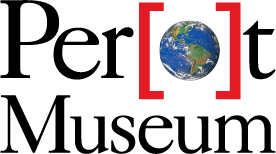
Visionary STEM Leader
Mae Jemison
October 17, 1956 – Present
Mae Carol Jemison was born in 1956 in Decatur, Alabama to Charlie and Dorothy Jemison. She is the youngest of three children and has an older brother and sister. When Dr. Jemison was three, her family moved to Chicago, Illinois, which she considers to be her true hometown. Dr. Jemison’s parents were supportive of her academic endeavors and helped her cultivate a love for learning and reading, especially on scientific subjects such as astronomy.
Dr. Jemison developed a love of space at an early age, avidly watching the Apollo missions as well as science fiction shows such as “Star Trek”. Lieutenant Uhura’s character on that show gave her the drive to accomplish what no African-American woman had done at that time, become an astronaut and travel to space.
During her time at Morgan Park High School, Dr. Jemison focused her studies and decided to pursue biomedical engineering. While still in high school, she also became interested in extracurricular activities such as dance and theater. She later chose to pursue those activities as well as her bachelor’s degree in science from Stanford University in California.
Dr. Jemison entered Stanford after graduating high school at just 16 years. At Stanford, Dr. Jemison was one of few Black students and encountered racial discrimination. She decided to improve her situation as well as that of other Black students by becoming involved with the Black Student Union and eventually became head of that organization.
After Stanford, Dr. Jemison entered Cornell University to pursue her medical degree and diversified her experience through study abroad in Cuba and Kenya. She also gained experience working at a Cambodian refugee camp in Thailand.
After graduating with a Medical Doctorate from Cornell in 1981, Dr. Jemison moved to Los Angeles where she interned at the Los Angeles County Medical Center in conjunction with the University of Southern California. She later became a general practitioner at that same hospital. Following her work in Los Angeles, Dr. Jemison joined the Peace Corp with which she served in missions in both Sierra Leone and Liberia.
Dr. Jemison spent two years with the Peace Corps before returning to the U.S. in 1985. Following her return, she changed careers, finally pursuing her dream of becoming an astronaut. Her admission was delayed during 1986 due to the Challenger disaster, but on June 4, 1987, Dr. Jemison became the first African-American woman admitted to NASA’s astronaut training program. Following her training, Dr. Jamison became the first African-American female astronaut. Initially, she worked as a science mission specialist through which she conducted crew-related experiments on space shuttles.
In 1992, Dr. Jemison became the first African-American woman in space, traveling on the Endeavor for the STS47 mission. Dr. Jemison spent eight days in space on this mission, during which she was able to conduct experiments on herself and other crew members studying weightlessness and motion sickness. Following this flight, Dr. Jemison spoke out about the abilities of not only women but minorities to contribute to society in great ways if just offered the chance to do so.
Dr. Jemison left NASA in 1993 and accepted a teaching fellowship at Dartmouth. She also created the Jemison Group, a company that researches, develops, and markets advanced technologies.
Education
- Morgan Park High School
- B.S., Chemical Engineering, Stanford University, 1977
- M.D., Cornell University Medical College, 1981
Special Affiliations, Awards, and Honors
- Head of Black Student Union at Stanford University
- First African American Female Astronaut, 1987
- First African American Woman in Space, 1992
- Member, American Medical Association
- Member, American Association for the Advancement of Science
- Board of Directors, World Sickle Cell Foundation
- Advisory Committee Member, American Express Geography Competition
Quote
“I’d love to go into space again if there were a mission to Mars. I’d also love to go to a completely different planetary system out of our solar system.”
Links to References
Text: Mae C. Jemison – Quotes, Facts & Family – Biography
Text: Mae Jemison | National Women’s History Museum
Quotes: Mae C. Jemison – Quotes, Facts & Family – Biography

